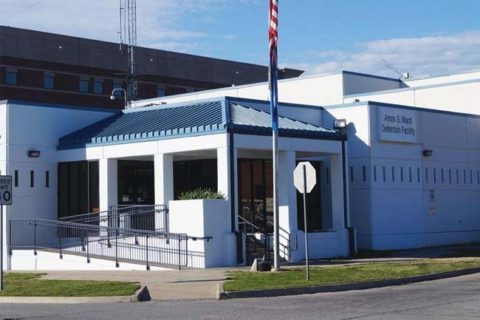According to the Bureau of Justice Statistics, which is also more known as BJS in short, about 1 in 38 adults in the United States were under some form of correctional supervision at the end of 2016. As there are more than 2.1 million inmates who are currently behind the bar across the country, it would be hard to provide adequate healthcare for those residents, especially when the budget is limited. It is such a shame because everyone at the prison, jail, or at a similar facility also deserves the right like everyone in the outside world when it comes to getting good healthcare.
In 1976, there was a case known as Estelle v. Gamble. From the case, the United States Supreme Court affirmed that failure to provide basic medical care to a prisoner violates the Eighth Amendment to the Constitution banning cruel and unusual punishment. Since that time, the quality of correctional healthcare has quickly improved. On the other hand, according to the National Survey of Prison Health Care or NSPHC, there is a study conducted by the National Center for Health Statistics or NCHS and BJS in 2017. As stated in the study, prison inmates will have higher rates of mental illness, chronic medical conditions and infectious diseases than the general population.
Everyone knows that prisons provide poor healthcare to their residents. It is such a shame because these residents deserve the same rights that the people in the outside world get, including good healthcare. It should be noted that they are also human beings whose rights should be fulfilled even when they are sitting behind the bar.
To fulfill the rights of the prisoners, healthcare in prisons should be improved. There are a few ways to improve healthcare in prisons. Some of them are as follows:
Method 1: Focus on mental health
A lot of prisons in the United States have made some efforts to improve healthcare in prisons for prisoners. As per the United States National Library of Medicine, the dual diagnosis of addiction and mental illness is common in prisoners. More than 70% of these prisoners who have mental illness say they use drugs and alcohol regularly in the month prior to incarceration. They can prevent relapse and decrease the chance of future incarceration by addressing substance abuse and mental health issues while incarcerated.
Now, there are a lot of correctional facilities that have started screening inmates after admission. Not only that, they also have trained all the employees to properly engage with the mentally ill. The good news is that there are a few states in the country that have created treatment centers that serve inmates with mental health issues by hiring hundreds of healthcare professionals such as doctors, nurses, dieticians, occupational and physical therapists and psychiatrists to work there. One of the states that are known to have created that kind of center is Illinois.
Method 2: Add in-facility services
In fact, a lot of correctional facilities are located in rural areas. It means it will be needed for the inmates to be transported to further areas to get care they need. In order to reduce transportation costs, correctional institutions use telemedicine. Aside from to limit transportations costs, it can also be used to add extra services within the facility.
According to a survey done by Centers for Disease Control and Prevention or CDC, 30 of the 45 states that responded to the survey used telemedicine for at least one kind of specialty or diagnostic service. By using this kind of technology, both doctors and patients in prison are able to communicate even without having to meet up in person. It is clearly good to help in the delivery of mental healthcare, management of chronic illnesses, and so on.
In addition, the mobile units for MRI and CT scans, ultrasounds, x-rays and ophthalmology are also used. They are all helpful to keep inmates within the facility while at the same time giving them access to the best possible healthcare.
Method 3: Be cost-effective
In order for the correctional institutions to be cost-effective while at the same time providing better healthcare to inmates, one of the ways that they can do this is by teaming up with third-party administrators or TPA. By partnering with TPAs, they can take the advantage of the existing comprehensive provider networks to get better access to quality care by spending less. TPAs are good at managing the relationships and the guarantees of payment with medical providers. When they are asked, they can also give extra services, such as telehealth, mobile units, on-site healthcare professionals and so on. As a lot of institutions do not have time, budget or expertise to make a provider network, they benefit from the relationships and pricing TPA partners can offer.
Method 4: Offer healthier food options
To reduce the number of issues that are currently faced by both male and female inmates, the institutions can offer healthier food options. In order to change a state law that required both male and female inmates to get the same menu, the warden at Maryland Correctional Institution worked as the dietary manager of the institution, as reported by Washington Post. According to the story, the change is proven to be effective to improve the health of female inmates as they get a more appropriate diet. By consuming the healthier foods, their chronic conditions such as diabetes and heart disease get better. Not only saving money on medications and healthcare costs, it is also good to boost the morale of the inmates.
It is worth noting that providing better healthcare at the correctional facilities does not only mean providing a better quality of life for inmates. In addition, it also helps them to face a better future when the time they re-enter into society comes. Basically, improving healthcare in prisons is obviously a good thing and something that should be done as it can make a lot of things better.

A bookworm and researcher especially related to law and citizenship education. I spend time every day in front of the internet and the campus library.




